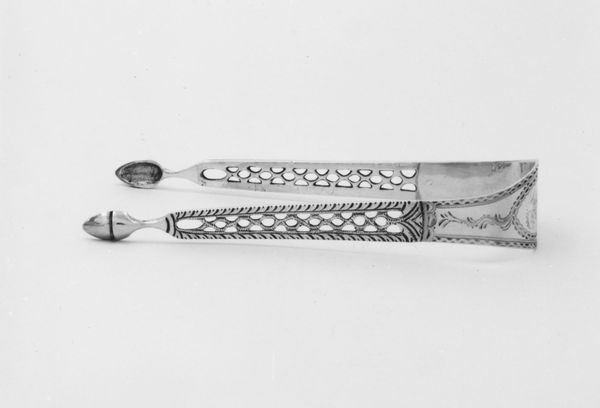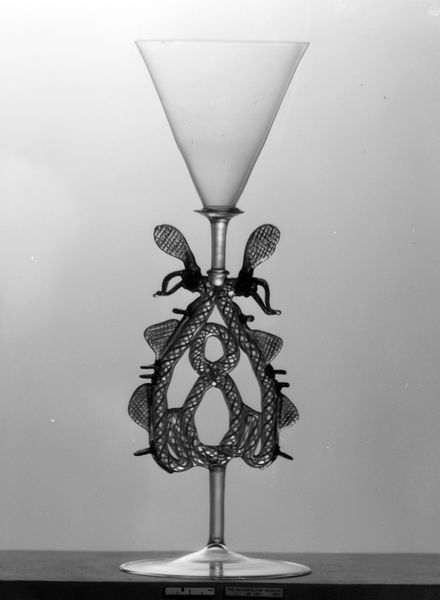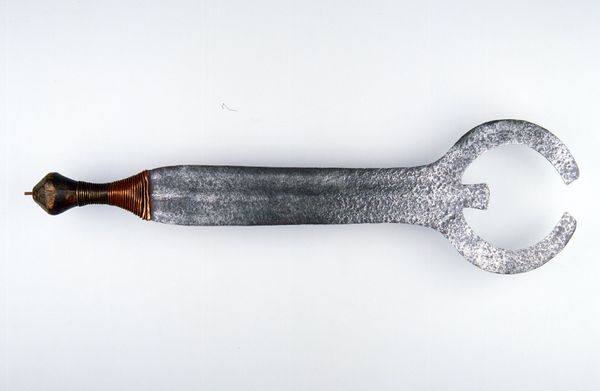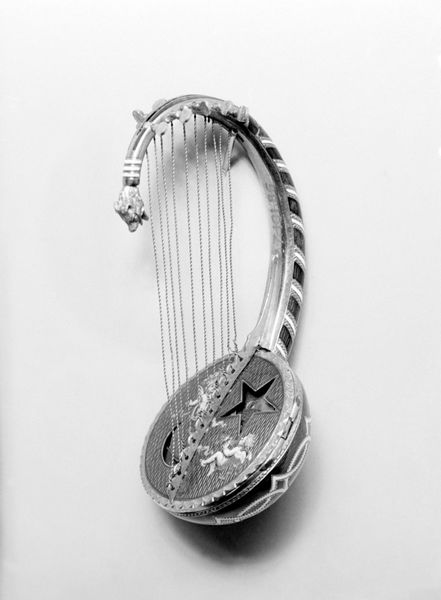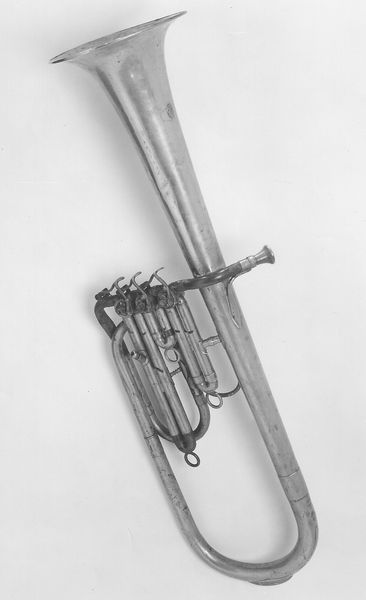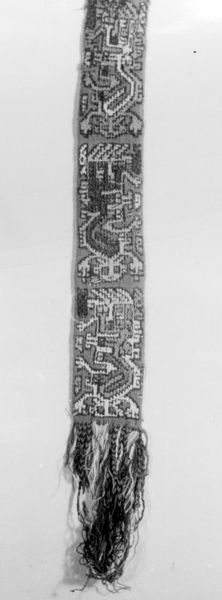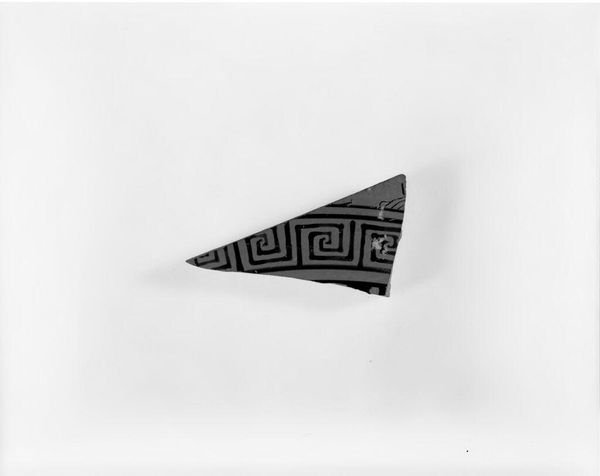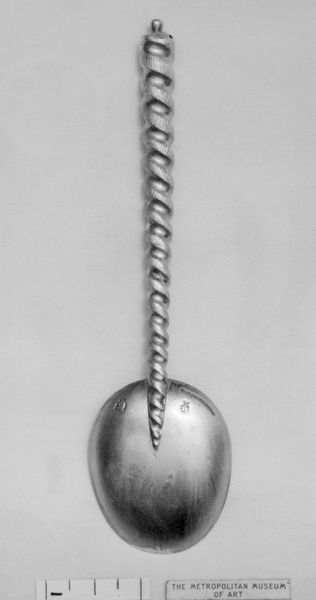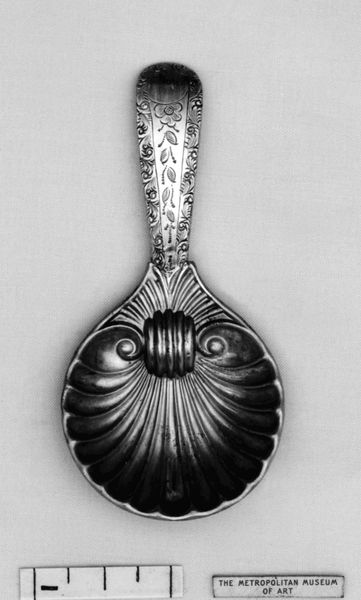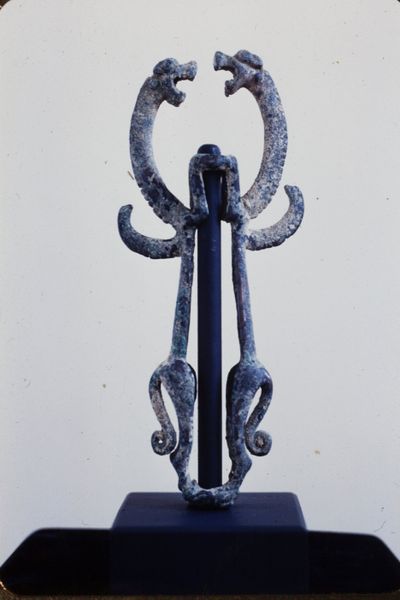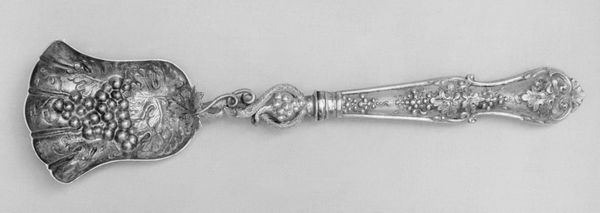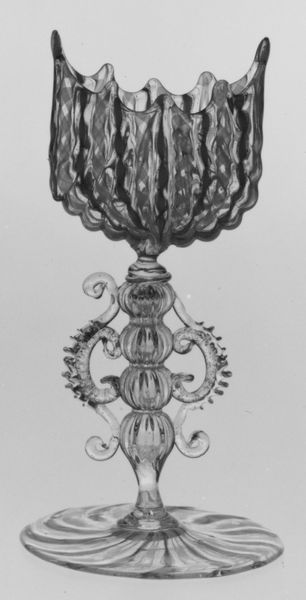
metal, sculpture
#
metal
#
sculpture
#
sculpture
#
musical-instrument
Dimensions: Height, bell face-down to top of coil: 24.9cm (9 13/16in.) Diameter of bell: 11.5cm (4 1/2in.)
Copyright: Public Domain
Curator: Here we have a fascinating object: a "Posthorn in E-flat." It's currently held in the collection of the Metropolitan Museum of Art. Editor: My first thought is of ornate ornamentation. The braided cord with tassels adds such a tactile, decorative quality to what is fundamentally a working instrument, an instrument whose shape follows from how sounds can come to life through metal. Curator: Precisely! Dating to somewhere between 1875 and 1920, it represents a crucial period in the development of musical instruments and the shifting social role of music. Posthorns were historically used to announce the arrival or departure of mail coaches. Editor: And think of the artisan who shaped this horn. How many blows, how many hours were required to make a hollow metal form? Did they know, as they labored, that one day their work would find its place within the context of an art museum? I want to see that in museums, this link between the craft of manufacture, its human cost, and its products. Curator: The standardization of the railway and telegraph led to the decline in usage for the Posthorn. Its adoption by amateur musical societies marks a shift towards recreational, even nostalgic, usage. It evolved from being purely functional to a symbol, or even an art object. Editor: Interesting point. I still find myself fixated on the material presence. The polished gleam, juxtaposed against the rough, almost homespun quality of the woven cord... It’s such a compelling tension between refinement and utility. Who took ownership over making it decorative? I'd say that transformation into art began the instant that horn became stylized. Curator: I agree the contrast draws you in, doesn't it? The posthorn offers a sonic link to historical networks of communication, which became less relevant with changing technology, while it takes on a sculptural form which can remain relevant even now. Editor: To look at such an intricate object really causes one to appreciate its labor as something valuable to culture, just as much as its intended purpose. Curator: Yes, truly. A poignant object for us to ponder together in our present.
Comments
No comments
Be the first to comment and join the conversation on the ultimate creative platform.
